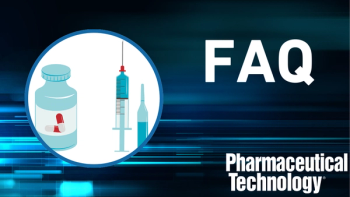
Crucial Points from a Manufacturing Perspective (PDA/FDA Joint Regulatory Conference 2023)
Sander Van Gessel, MEng, Business Unit Director, DFE Pharma, discusses the important components of nitrosamine impurities from a manufacturing point of view as a part of his session, "Reducing Nitrosamines Without the Use of Scavengers: The Critical Role of Excipients - An Excipient Manufacturer's View."
Sander Van Gessel, MEng, Business Unit Director, DFE Pharma, discusses the important components of nitrosamine impurities from a manufacturing point of view as a part of his session, "Reducing Nitrosamines Without the Use of Scavengers: The Critical Role of Excipients - An Excipient Manufacturer's View."
Van Gessel: Yeah, so with what I've been highlighting within with my session is studies that we've done at Big Pharma, but also taking studies from across the globe into impurity formation, impurities that can lead to nitrosamine creation. As an excipient supplier, we think we're really well positioned to help the industry understand risk factors that may come from excipients. What we see when we look at these different impurity levels is that we focus specifically on nitrates. And when we look at nitrites, then we see that within different excipients, you have different levels of nitrates and within the same Excipient, but from different suppliers, you again have different levels of nitrates, and also these different suppliers may have different batches which contain a very varying amount of nitrates. These nitrites are then potential, again, potential risk factors for nitrosamine formation in the end drugs, and that they need to be controlled and understanding how to control them. That is something that we've that we've been working on. And yeah, the industry needs to partner with reputable, reliable suppliers to really connect and understand what kind of risk nitrosamine brick risk and drug may have.
Van Gessel: Yeah, so it's a continuous journey. So the whole nitrosamine topic has been around for a couple of years now. And we've been focusing very much about on the raw material and different impurity levels within the supply chain. But one of the things that we've also been seeing is that the the manufacturing route itself can also have an influence. At the pharma one of the root causes of nitrites within our excipients which can potentially lead to the formation of nitrosamines is actually in the drying process itself. In the manufacturing drugs, the drying process is an inherent part of wet granulation techniques that a lot large part of the industry uses, and we think that next steps can be taken by going, transferring to dry granulation or directing. And again, you're working together with suppliers can really support in improving the drug safety.
Newsletter
Get the essential updates shaping the future of pharma manufacturing and compliance—subscribe today to Pharmaceutical Technology and never miss a breakthrough.





